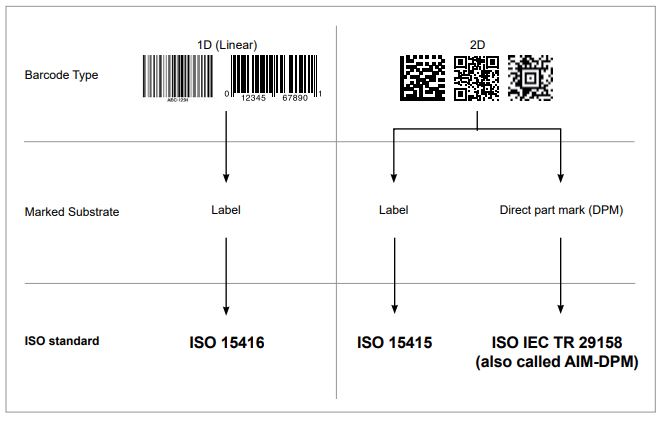Check barcodes, measure the quality of 1D and 2D barcodes according to the prescribed bar code quality standards. The bar code inspection system of the fully integrated solution in 1 system is designed to test and verify barcodes accurately and reliably for application standards such as GS1, HIBC, USPS and ISO/IEC 15415/15416.
Barcode technology is based on the recognition of signs coded in the form of bars and interlaced spaces of a defined size according to the principle of converting characters into a sign form called the bar code specification.
Barcodes must be set up so that they can be reliably decoded in use, so barcode equipment manufacturers and users who establish barcodes require publication and availability of a standard. about standard testing for the purpose of objectively evaluating barcode quality, as evidence when implementing equipment as well as applicable standards to determine the quality of barcodes.
The ISO Technology International Organization for Standardization, founded in 1947, is a standards-setting body made up of representatives from various standards organizations. There are hundreds of ISO standards, one that deals with barcodes, how data is included in a barcode, testing, determining the size of the barcode.
There are 3 ISO standards related to barcode quality:

Code technology dựa trên cơ sở công nhận các dấu hiệu được mã hóa dưới dạng vạch và khoảng trống xen có kích thước xác định theo nguyên tắc chuyển các ký tự thành dạng dấu hiệu gọi là quy định kỹ thuật của mã vạch.
The 1D barcode ISO standard requires that 10 individual scan lines be performed throughout the height of the code and the level specified for each line. The types of scan lines are determined by various parameters. If a scan line does not meet minimum reflectance, decoding, or minimum edge contrast, it will automatically receive an "F" score. If all 3 pass, the software will score the parameters, contrast, modulation, error and decoding ability of the symbol.
Each line is graded on a scale from A to F. Once every scan line has been graded, 10 scans are averaged to create an official barcode category.
Minimum Reflectance check that the bars are dark enough to accommodate the required proportion of light reflected off the space machine.

Modulation refers to local variations.

Edge Contrast measure the difference between adjacent bars and spaces.

Defects include printing errors, stains or markings affecting a bar or space.

Decodability accuracy ratings of bar widths, and spaces relative to their ideal size. Barcodes with increased or distorted bar width have a low decoding score.

Standard classification of 2D barcodes based on 8 different parameters. The scoring process starts with a pass or fail test code, if the code passes, it passes the first test. Otherwise, it will automatically be rated "F". After a code is decoded, it is classified according to Symbol Contrast, Fixed Pattern Damage, Modulation, Axial Non-uniformity, Grid Non-uniformity.
Symbol Contrast of the icon refers to the difference between the darkest and the lightest module.

Fixed Pattern Damage include errors with L face or watch model or quiet zone.

Modulation measure local variations in reverse.

Axial Non-uniformity refers to the uneven scaling of the code.

Grid Non-uniformity measure the maximum deviation from the grid.

Các tham số chất lượng và quy trình phân loại cho mã DPM tương tự như ISO 15415, với một vài điểm khác biệt chính. Đầu tiên, đó chính là cách xác định ngưỡng toàn cầu, bản chất là đường phân chia giữa các ô sáng và tối. Vị trí của đường đó được vẽ là rất quan trọng, vì nó xác định ô gần sáng hay tối hơn.
To match a wide variety of substrate surfaces, AIM DPM calculates a global threshold using a more sophisticated algorithm than ISO 15415. AIM DPM also allows the use of 30°, 90° lighting and exterior domes. . This makes verification on curved, reflective or dot-marked parts possible.
Many businesses have also developed barcode quality standards that require their manufacturers to comply with the standards. The application standard outlines which are accepted, which ISO standards to classify.
For codes that print and process as well as for customers who receive the codes, verification checks provide assurance and confidence that the codes will be readable. With an increasing number of regulated industries must also meet the required standards of the industry. Therefore, barcode verification is a code quality control tool that ensures complete barcode scanning throughout the supply chain.
>>> Xem thêm: VISION SYSTEM AND VISION SENSOR
----------------------------------------------------------
CONTACT INFORMATION
New Ocean Automation System Company Limited
Website: New Ocean Automation System
Hotline: 1900 0224
